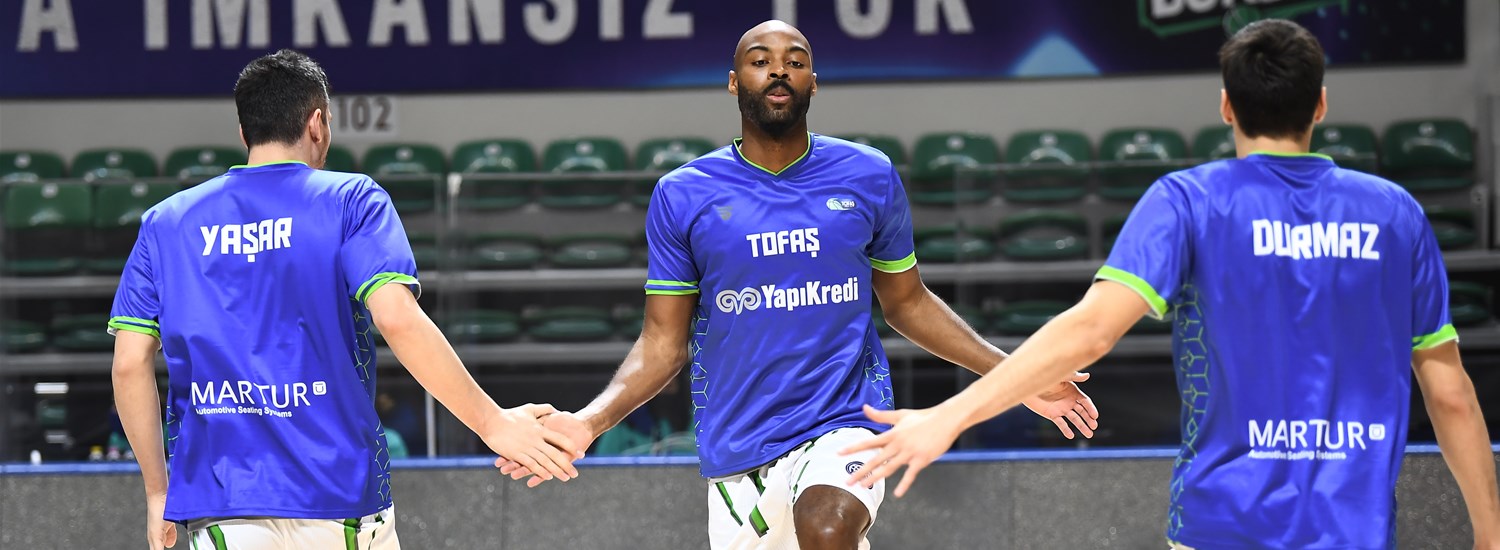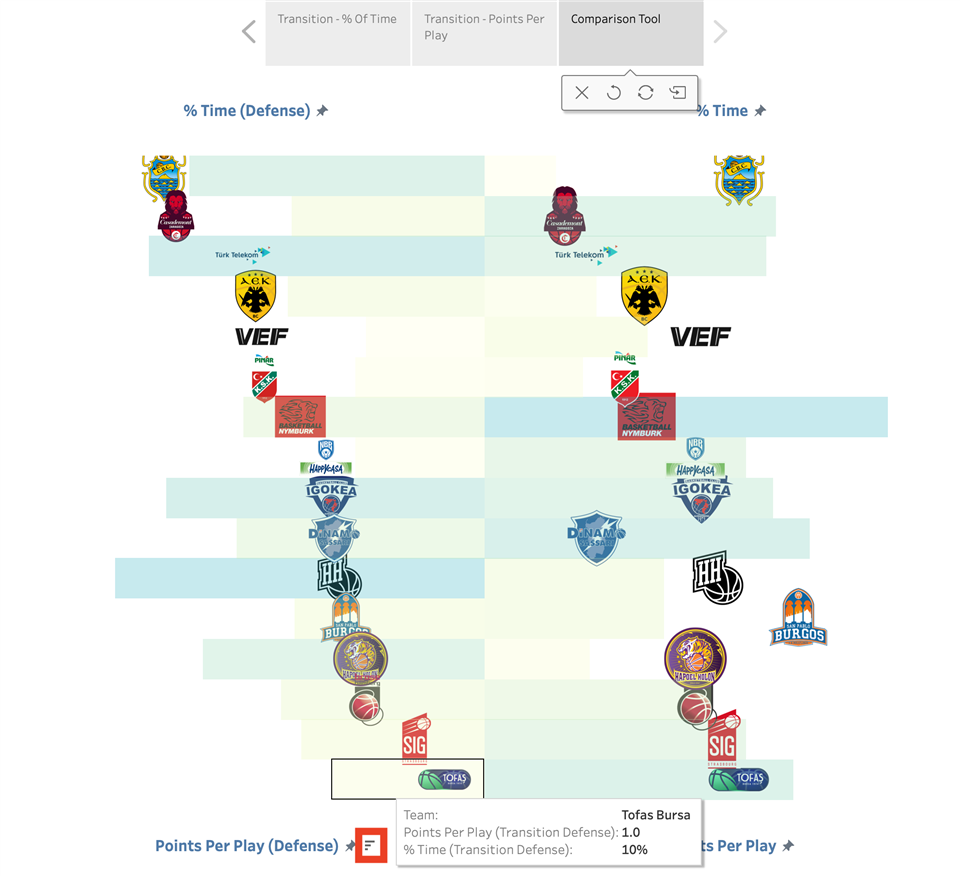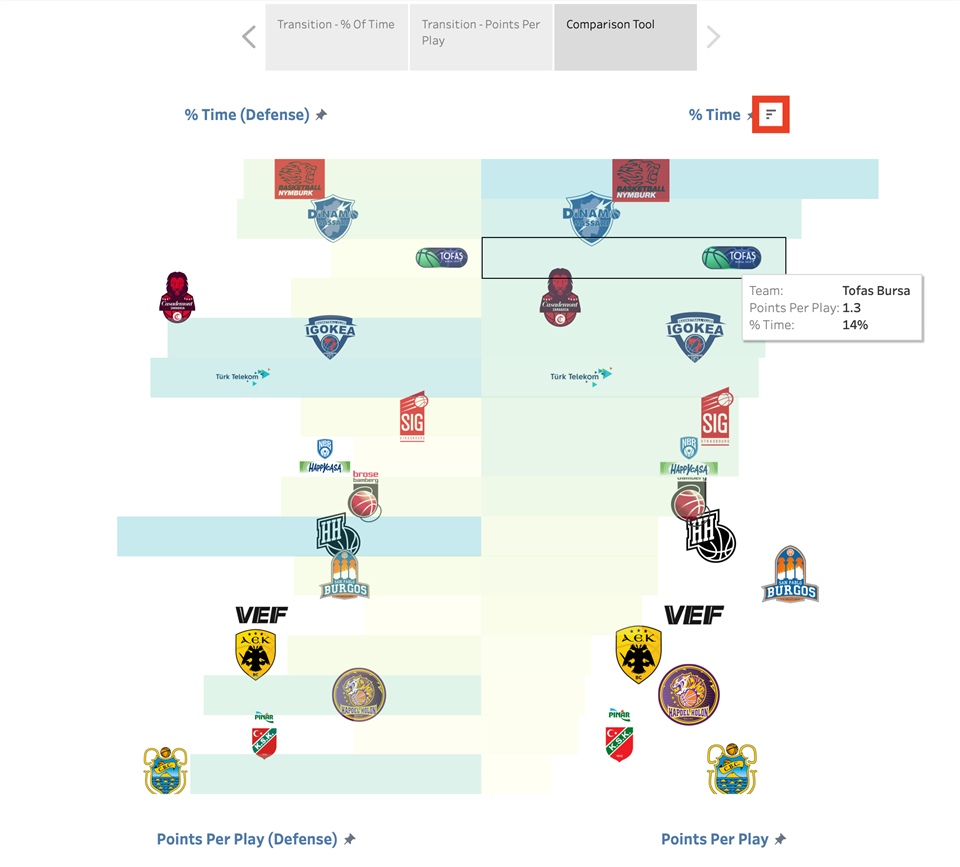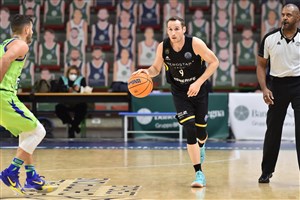
Road Runners - Tofas Bursa ruling in transition
MADRID (Spain) - Much like a very surprised Anthony Davis, eyebrows across the European basketball community were raised in unison last summer, when the Basketball Champions league saw a veritable invasion of high-profile Turkish clubs. Many of the heads attached to those eyebrows instantly expected the likes of Galatasaray, and Darussafaka to become instant title challengers (even favorites). The BCL, however, has a way of surprising even its' biggest clubs. Of the four new Turkish teams, only two have joined Turk Telekom in making it out of the group stages: Tofas Bursa and Pinar Karsiyaka. And even then, in both cases the clubs needed to wait for their final game of the Regular Season to book a place in the Play-Offs.
For Tofas, qualification for the Play-Offs came after a massive victory over last year's Final 8 challengers ERA Nymburk and at the expense of JDA Dijon, also a challenger at last year's Final 8. That last victory carried both of the hallmarks of a team identity that is sharpening further into focus with each game Tofas play. Hakan Demir took over the team early in the season and since then this team has won every game on the road and they have done that by primarily dominating their opponents in one specific phase of the game: transition.
We often see very good transition offensive teams like Lenovo Tenerife last season, or very good transition defensive teams like ERA Nymburk (also last season) but what set Tofas apart from the other Play-Off challengers this year is that they occupy top spots in the charts statistically for both offense and defense.
The data viz below has different tabs to explore with transition numbers pulled from Synergy for all of our Play-Off teams. When evaluating how well a team utilizes the transition phases of the game we need to look primarily at how often they are able to create transition opportunities (% of Time) and how many points they scored on average for each of those opportunities (Points Per Play). What we have below is three tabs; the first tab on your screen is a comparison tool for all 16 teams offensively and defensively, then a tab each for '% Of Time' and 'Points Per Play' (if you prefer a simpler way to consume the data).
If we start with defense and use the comparison tab to filter for Points Per Play (PPP) conceded (red box in the screengrab below), we can see by looking at the club logos that Tofas are the holders of the best-ranked defensive PPP in the Play-Offs at 1 Point Per Play conceded. This may not sound like an especially impressive number as a team scoring 1 point every time down the floor is likely to score around 80 points per game in the BCL. But what we need to understand is that transition opportunities average out above 1 PPP across all teams. Halfcourt opportunities and out of bounds plays are all much less efficient scoring opportunities in terms of league averages. Both are consistently lower than 1 PPP. The best defensive teams are primarily the teams that reduce the number of transition scoring opportunities for their opponents (% Of Time). When it comes to Tofas they are also the third-best team in the Play-Offs in this regard, with just 10% of their oppositions scoring chances coming in transition. In combination with the lowest PPP conceded, Hakan Demir's squad sit in the perfect sweet spot for transition defense.

The obvious question is what makes Tofas so good at reducing opportunities and also making those opportunities less efficient. The most apparent way to reduce transition opportunities is to cut out turnovers. Live-ball turnovers lead to far-and-away the best scoring opportunities in transition. Then after that, the next opportunity to run the break comes from a missed shot. There is some debate around which missed shots lead to the best advantages in transition. Traditional wisdom says that 3-pointers above the break lead to long rebounds and easy outlet passes. If that is actually based on evidence remains to be seen and even if it were for this season, it's potentially subject to change every year in the BCL as the participating clubs and rosters have such a high turnover. None-the-less it would still make sense for low turnover and high 3-point percentage teams to have an advantage defending in transition.
What makes Tofas interesting in this regard is that they aren't particularly outstanding in either. They only shoot 33.8 percent from deep which ranks them twenty-first in the league even though they attempt - an above-average - 25 per game. And although they rank seventh for Turnover Percentage, turning the ball over on 13.7% of their possessions - that is certainly not the driver behind their excellent transition D. What they do exceptionally well is to control what they can. Shooting is a make or miss situation and not even the 2015 Warriors made every shot. One thing that is within a team's ability to decide on every possession, is the way they react to a miss.
This is where Tofas shine. Watch the two clips in the video below and notice that in both, the moment the missed shot is recovered, the men in Green reacted first. In the first clip, Akoon-Purcell is already preventing any long outlet pass and everyone else is communicating and sprinting. Even though they start the play a man down with Zubcic below the baseline, by the time he's sprinted back into the play, Tofas had slowed the ball and clogged the paint, successfully navigating the outnumber situation. Sure, Nymburk threw a bad pass and the transition opportunity was self-cancelled, but if you are Tofas, you make your own luck. Then the second clip it's the same again, as Tarik Phillip delays the outlet after a missed 3-point attempt from above the break. This time they start with two players behind the ball but again clog the paint and communicate matchups. The result is a contested 3-pointer off the dribble and a low percentage play.
Switching to offense we see a similar picture. If we filter now for '% Time' (red box again in the screengrab below) for offense we see Tofas back at the right end of the bar chart. 14 percent of their scoring opportunities come in transition which is good for third amongst Play-Off teams and they score at 1.3 PPP on those opportunities which is a good distance north of the league average and ranks them second in the 16 teams still hunting the 2021 title. In fact, only Nymburk score more fastbreak points than Tofas at 17.2 per game vs 16.3.

This time the data does match the narrative when it comes to explaining why Tofas are able to generate high volumes of scoring opportunities in transition. They rank first in the Play-Offs for Defensive Rebounding Percentage, pulling down 68 percent of their opponents misses, and also third for steals as they dispossess teams on 13 percent of their defensive possessions. And again, when we look at the film we see the pattern continue when it comes to reacting first and controlling what they can. They are also elite at reading the ball-handler's eyes in the pick-and-roll and have an unerring ability to steal the first pass out of the ball screen.
The clip below highlights the rules that Tofas work to defensively. Watch the way Simmons #11 hedged the screen and used his wingspan to reduce lines of sight to make a pass. Then Tarik Phillip jumped to deter any skip or reverse pass to the weakside. This left only one obvious pass to the roller and Akoon-Purcell was waiting for it like a shark in the water. Also worth noticing is that Nuni Omot was in position to tag the short-roll if the pass to the roller had been early. The game-plan is clearly to funnel JDA Dijon into passing to the roller and being ready to pick off the pass whether it's early or late.
It's a similar story in the last clip. Only this time Akoon-Purcell is the defender on the nail and in position to steal the short-roll pass. Again he made an elite-level defensive read as the hedge was flatter, reducing the angle for a pass to the short-roll and leaving his man (#83 Axel Julien) the obvious pass. Sure, it's a poor pass but if you are Tofas Bursa, you make your own luck.
The only point left to make is about how well the construction of this roster fits this purpose. The fact that Hakan Demir started with the club after the summer means that he likely has to take a lot of credit for designing a scheme to fit what he had and then the recruitment of Tarik Phillip surely goes down as inspired. For evidence, you only need to see the difference between the Tarik Phillip at Hapoel Jerusalem and the player that looks to be back at home with Tofas. When you have athletes like Akoon-Purcell, Tarik Phillip, and Semaj Christon on the perimeter, and they are this committed to playing alert, predatory basketball, it seems intuitive to create a team that is a transition monster but actually getting a team to consistently play this way is an impressive feat.
There are, of course, much bigger challenges waiting in the Play-Offs but make no mistake, if Tofas Bursa continue to dominate in transition like this, they are a very real threat to make the Final 8 in their first season.















